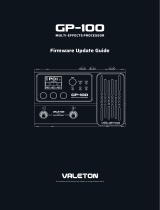
Using the Graphical User Interface 13
2
Using the Graphical User Interface
The Graphical User Interface (GUI) provides an interactive approach to
perform comparisons and updates using Server Update Utility (SUU).
To launch the GUI, insert the Dell Server Updates DVD into the DVD drive.
If SUU does not launch automatically, navigate to the Dell Server Updates
DVD root directory and launch suulauncher.exe (for Windows systems) or
type suu -g (for both Windows and Linux systems) in a command window.
In the GUI, you can start with a comparison of the components in your
Dell™ system and the components in the repository. You can then proceed to
upgrade, downgrade, update components, or you can browse the repository
for components.
Whenever SUU inventories your system for the list of components installed,
a progress bar that shows the progress of the inventory collection is displayed.
After the progress bar completes 100%, SUU displays the Comparison Report.
NOTE: On the Red Hat Enterprise Linux Server version 5 operating system, DVDs are
auto-mounted with the -noexec mount option. This option does not allow you to
use the autorun feature or run any executable from the DVD. You need to manually
mount the DVD and then run the executables.
NOTE: Ensure that the path from which you run SUU does not exceed
260 characters on the Windows operating system. On Linux systems, ensure that
the path from which you run SUU does not exceed 4096 characters.
Prerequisites
When you start SUU, SUU performs a prerequisites check. In the
prerequisites check, SUU scans your system to determine if a hardware or
software update is required. When the scan is complete, SUU displays the list
of components whose prerequisite conditions are not met. The list of
components may comprise hardware components, the Dell OpenManage™
component (software component), or hardware and software components.
If the components in your system meet the prerequisite conditions, SUU does
not display the prerequisite failure messages. SUU displays the Comparison
Report instead.





















